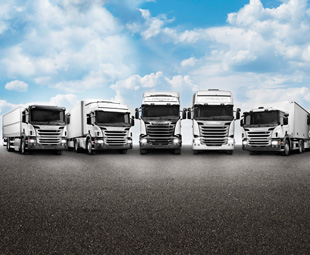Chasing records

Despite tough market and economic conditions, Scania South Africa has had yet another record year. Entering 2016, though, Steve Wager, the company’s MD, is not letting complacency set in.
Based on its 2015 performances in South Africa, as well as in the seven other southern African markets in which it operates, Scania is clearly doing something right. Notable for its bus and extra-heavy commercial vehicle (EHCV) offerings, the company has also introduced a number of value-added services to boost both its own performance and that of its customers.
Says Wager: “We had another record year in South Africa during 2015. In the EHCV segment our market share for the year was 15 percent. We finished in a very good way in terms of our sales volume of trucks. Regarding buses, we are equally happy. It was a good year for us and we’ve ended in second place in the market.”
One notable event of 2015 was the delivery of 66 buses to the Cape Town bus rapid transit (BRT) system, MyCiti. “The vehicles are also being fully maintained by our workshop technicians,” Wager adds.
He talks with pride about the brand’s performance in neighbouring countries. In both Namibia and Botswana, Scania has retained number one market share in the EHCV segment – with close to 40 percent in the former, and around 50 percent in the latter.
“We are extremely pleased with our performance in Namibia – we were able to sign a number of new customers during 2015, who are delighted with our offering and performance. The economy there is holding up well, though the market is much smaller.
“Botswana has its economic problems; the market is down considerably, but are happy with what we are doing there.”
Over on the east coast of Africa, the company celebrated the opening of its first dealership in Mozambique at the end of November 2015. “I’m confident that, with our new dealership in Beira, Mozambique will become a big market for us. The market is flooded with ex-American left-hand drive vehicles – the potential is huge,” smiles Wager.
Up in Tanzania, Wager notes competition from Chinese brands and a lack of cross-border traffic as reasons for tough conditions. “But we are satisfied with our performance. Many operators there have remained with or returned to Scania, due to the robustness of our trucks.”
The company also has independent importers in Zambia, Zimbabwe and Malawi, though those markets are all currently struggling and present a challenge.
“We do have a very strong footprint in the southern African markets,” says Wager. “Our sales and service all falls under one account, so if a local truck needs to be fixed in a different country, the billing goes through us here in South Africa,” he explains.
“Despite the economic issues, I’m fairly confident about the future of southern Africa and we expect to see strong growth in these markets. In South Africa, though, I think we’re going to be in this ‘doldrum-state’ for another year or so …”
The local economy’s performance during 2015 presented challenges to the whole market, resulting in a decline in overall sales. “That’s inevitable and a very good barometer of the economy and general demand. We original equipment manufacturers all expected market growth this year (Scania predicted five percent) and geared up for that.
“What transpired, however, was a five percent decline in the market. That ten-percent gap – and all the stock not bought – makes the market more competitive,” Wager explains.
This competitive marketplace, says Wager, ensures that the team at Scania keeps on its toes and sets out to differentiate itself by offering optimal solutions to the customer.
One of these solutions, introduced in October 2015 through Scania Finance, is Scania Insurance – a competitively priced insurance solution tailor-made by people who understand the insurance needs of transporters.
While the offering is still young, Wager is pleased that it is striking the right chords with operators. “We’ve done a number of road shows and have attracted a number of big customers. It is a very competitively priced product, because it’s not generic,” he says.
Two of Scania’s more established solutions; truck rentals and used trucks, have also proved successful and are developing strongly. Launched at the beginning of 2013, Scania Rental is a flexible product designed to meet customers’ rental needs for up to a year.
“This is a core product to us, not just an add-on. In addition to truck tractors, we’ll continue to expand rentals into many other sectors,” Wager notes.
The company also expects its used-truck business to expand, although the sales success of new Scania trucks has made this more difficult than expected. “As a result of the success we’re having with new vehicle sales, there are a lot of trade-ins, but our used-truck operation is a core business; we now have a very professional used-truck business.”
It is clear that there is plenty to keep Scania and its customers happy as 2016 gets underway. While all indicators point to another tough year, Wager is not despondent. “We expect the market to recover slightly during 2016, albeit not to a great extent. Business confidence is fragile and some sectors, such as mining, are on their backs.
“We’ve entered 2016 on a record level, so we need to carry on doing what we’re doing while expanding in other segments, such as construction. We don’t sell a lump of metal, we sell a transport solution
and top-class customer service,” he concludes.
Published by
Focus on Transport
focusmagsa



